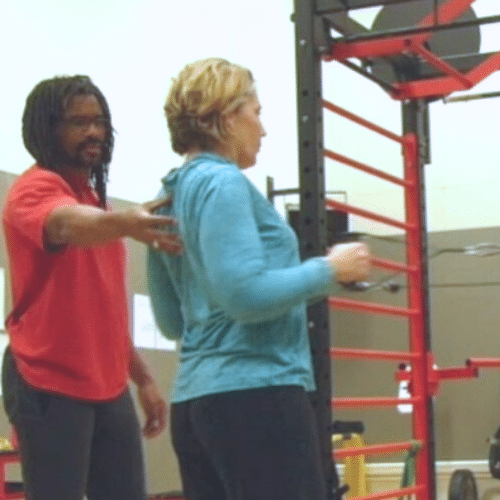Lunge alternate
Exercise technique:
You are standing with your feet hip-width parallel. Your back is straight and your gaze is horizontal. A dumbbell in each hand, you will be the shoulder blades. You are finally ready.
The exercise will consist of taking a step forward while bending both knees. Remember to bend the back knee first so that you can be sure that the front leg does not protrude too much from your toe. You will thus alternate right leg, left legs.
Inhale on the descent and exhale on the ascent. During the exercise, you will keep your abdominal strap tight.
Muscles worked:
Main: glutes, quadriceps.
Secondary: hamstrings, calves, lower back.
By spreading your legs more or less apart, the exercise will locate your muscle fibers differently. Thus, by spreading the legs only slightly, the work of the quadriceps will be favored while a « large gap » will preferentially work on the glutes and hamstrings.
Lunge alternate interest
The front lunges make it possible to work the thighs and glutes while being less limited by the erectors of the spine (lumbar) as in the squat, on the one hand because the back remains more vertical and on the other hand, because the loads handled are less high since ‘only one thigh works at a time.
However, the front lunges are an exercise requiring some agility (balance) which makes it an exercise where you cannot really force. They are therefore to be used in addition to other movements.
Variants
There are several possible variations. For example, you can work without alternating. The exercise will consist of staying on one leg, the time to do your set and change after it is over. You can also perform back lunges either alternating or staying on the same leg and other exercises which you can see by clicking this link here. You can also do the barbell exercise on your trapezius muscles.
You can also increase range of motion by placing a support under your front leg.
Danger / contraindication
The exercise is demanding on the knee joint, especially if the walk is short. I advise you to precede it with several sets of legs, seated extension and leg curls.
If you experience pain, feel free to reduce the range of your knee flexion so that you can perform the movement without pain. The maximum stride length is, when your thigh is parallel to the ground, that it forms a right angle with your calf.
It should also be noted that in the event of a back problem, I do not recommend the practice of lunges on the bar. Even if the load is « light », putting pressure (a weight) on the back is never without risk.

